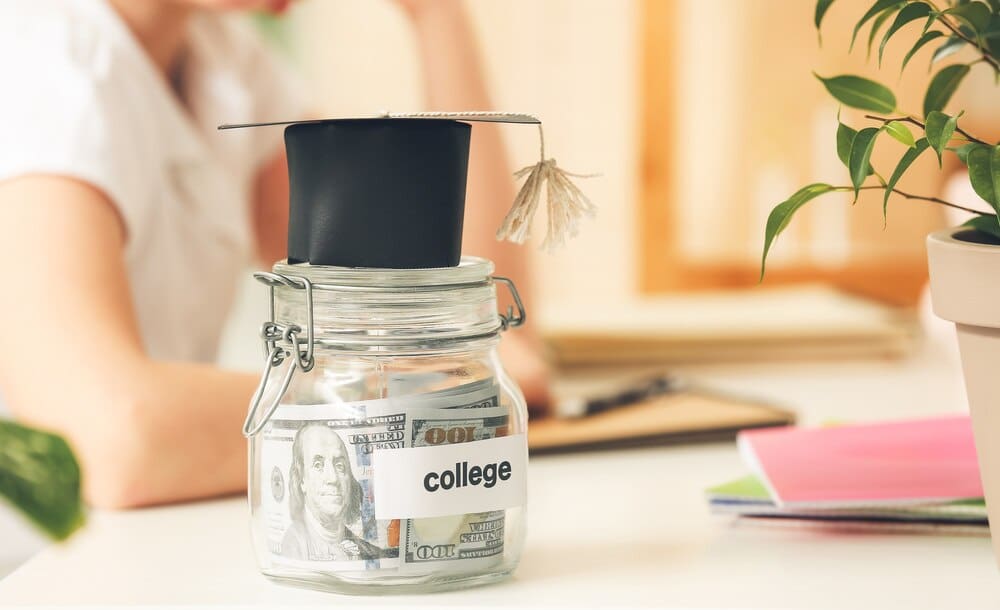For millions of Americans, defaulting on a student loan is a financial catastrophe with severe and lasting consequences. When a borrower fails to repay their educational debt, typically after 270 days of non-payment for federal loans, the government and private lenders initiate aggressive collection actions that can cripple one’s financial life for years. These actions include significant damage to the borrower’s credit score, the garnishment of wages directly from their paycheck, the seizure of tax refunds and other federal benefits, and the loss of eligibility for future student aid, creating a difficult cycle of financial hardship that can be challenging, but not impossible, to escape.
What It Means to Default on a Student Loan
Understanding the path to default is critical for any borrower. The process doesn’t happen overnight; it begins with delinquency and progresses over several months. Recognizing these stages can provide the opportunity to take corrective action before the most severe consequences take hold.
Delinquency vs. Default: Understanding the Timeline
The moment you miss a student loan payment, your loan is considered delinquent. Delinquency starts on the first day after you miss a payment due date. Your loan servicer will likely begin contacting you through phone calls, letters, and emails to remind you of your missed payment.
While delinquency is serious and can result in late fees and negative reporting to credit bureaus after 90 days, it is not the same as default. For most federal student loans, including Direct Loans and Federal Family Education Loans (FFEL), default occurs when a loan payment is 270 days past due. At this point, the loan is transferred from your servicer to a collection agency, and the full power of the federal government’s collection tools is unlocked.
Private student loans operate on a much faster timeline. A private loan can be declared in default after just 120 days of non-payment, and in some cases, a lender may declare a default after the very first missed payment. The terms are dictated entirely by the promissory note you signed, making it crucial to understand your specific loan agreement.
The Immediate and Severe Consequences of Federal Loan Default
When a federal student loan enters default, the repercussions are swift, automatic, and far-reaching. Unlike other forms of consumer debt, the federal government has extraordinary powers to collect what it is owed, often without needing to go to court.
Your Credit Score Takes a Major Hit
One of the first and most damaging consequences is the impact on your credit. The default is reported to all three major credit bureaus—Equifax, Experian, and TransUnion. This negative mark can cause your credit score to plummet by 50 to 100 points or more, making it incredibly difficult to qualify for new credit, such as a mortgage, auto loan, or even a credit card. This record of default will remain on your credit report for seven years.
Acceleration of Your Loan Balance
Upon default, your loan servicer can declare the entire unpaid balance of your loan, including all accrued interest, immediately due and payable. This process is known as acceleration. Suddenly, you are no longer dealing with manageable monthly payments but a demand for the full, daunting sum of your debt.
Wage Garnishment Without a Court Order
Through a process called Administrative Wage Garnishment (AWG), the Department of Education can order your employer to withhold a portion of your earnings and send it directly to them. They do not need a court order to do this. The government can garnish up to 15% of your disposable pay, which is the amount left after legally required deductions like taxes.
Treasury Offset: Seizure of Tax Refunds and Federal Benefits
The Treasury Offset Program (TOP) is another powerful collection tool. Through TOP, the government can seize your federal and state tax refunds to apply them to your defaulted student loan debt. Furthermore, the program allows for the offset of certain federal benefit payments, including Social Security retirement and disability benefits, though there are limits to protect a portion of these essential funds.
Loss of Borrower Benefits and Eligibility
Defaulting on a federal loan means you immediately lose access to all borrower benefits. This includes eligibility for deferment, forbearance, and flexible repayment options like Income-Driven Repayment (IDR) plans. Additionally, you will be barred from receiving any further federal student aid until you resolve the default, which can prevent you from returning to school to improve your career prospects.
Skyrocketing Costs from Collection Fees
To make matters worse, significant collection costs are added to your loan balance. These fees can be as high as 25% of your principal and interest balance. This means a $40,000 defaulted loan could instantly become a $50,000 debt, digging you into an even deeper financial hole.
How Private Student Loan Default Differs
While the consequences of defaulting on a private student loan are also severe, the collection process and tools available to the lender are different from those for federal loans. Private lenders are financial institutions and must operate within the standard legal framework for collecting consumer debt.
The Lender’s Path to Collection
A private lender cannot unilaterally garnish your wages or seize your tax refund. To collect from you involuntarily, the lender must first file a lawsuit against you. If they win the lawsuit, they will obtain a court judgment, which then gives them the legal authority to pursue wage garnishment or place a lien on your property.
Statute of Limitations: A Key Distinction
Unlike most federal student loans, which have no statute of limitations for collection, private student loans are subject to one. The statute of limitations is a state law that sets a time limit for how long a lender has to sue a borrower for unpaid debt. This period typically ranges from three to ten years, depending on the state. Once this period expires, the lender loses the right to sue, though the debt itself is not erased.
Less Flexible Resolution Options
Resolving a private loan default can be more challenging. There are no federally mandated programs like loan rehabilitation or consolidation. Your options depend entirely on the lender’s willingness to negotiate a settlement, a modified payment plan, or a refinancing arrangement. These options are offered on a case-by-case basis and are not guaranteed.
How to Get Out of Student Loan Default
Despite the grim outlook, defaulting on a student loan is not a life sentence. The federal government provides clearly defined pathways to cure a default and regain good financial standing. Taking action is the first and most important step.
Loan Rehabilitation
Loan rehabilitation is often the best option for first-time defaulters. To rehabilitate a defaulted Direct Loan or FFEL Program loan, you must make nine voluntary, on-time payments within a 10-month period. The payment amount is calculated based on your income and can be as low as $5 per month. The greatest benefit of rehabilitation is that upon completion, the record of the default is removed from your credit report, offering a true fresh start.
Loan Consolidation
Another path out of default is to consolidate your defaulted federal loans into a new Direct Consolidation Loan. To qualify, you typically must either make three consecutive, voluntary, on-time payments on the defaulted loan or agree to repay the new consolidation loan under an Income-Driven Repayment plan. While consolidation resolves the default status quickly, the original record of default remains on your credit history but is marked as paid.
Repayment in Full
The fastest way to resolve a default is to repay the entire loan balance, including interest and collection fees. However, given that the balance is often accelerated and inflated with fees, this option is not financially feasible for the vast majority of borrowers in default.
Proactive Strategies to Avoid Default
The best strategy is to prevent default from ever happening. If you are struggling to make your payments, you have several powerful tools at your disposal, especially with federal loans.
Enroll in an Income-Driven Repayment (IDR) Plan
IDR plans are the most effective defense against default. These plans cap your monthly payment at a percentage of your discretionary income (typically 10-15%) and extend the repayment term. For many low-income borrowers, the monthly payment can be as low as $0, which still counts as a qualifying payment and prevents delinquency.
Utilize Deferment and Forbearance
If you face a short-term financial hardship, such as unemployment or a medical emergency, you can apply for deferment or forbearance. These programs allow you to temporarily pause or reduce your payments for a set period. While interest may still accrue, these options provide critical breathing room to get back on your feet without falling into delinquency.
Maintain Open Communication
At the first sign of financial trouble, contact your loan servicer. They are your primary resource for understanding your options. Ignoring their calls and letters only accelerates the path to default. Being proactive and transparent about your situation allows them to help you find a manageable solution.
Conclusion: A Difficult but Surmountable Challenge
Defaulting on a student loan unleashes a torrent of financial penalties that can derail your economic stability for years. The damage to your credit, the seizure of your income, and the ballooning costs create a formidable barrier to financial well-being. However, it is crucial to remember that pathways to recovery exist. By understanding the consequences, exploring resolution options like rehabilitation and consolidation, and, most importantly, proactively managing your payments through programs like IDR, you can navigate away from default and back toward a secure financial future.







